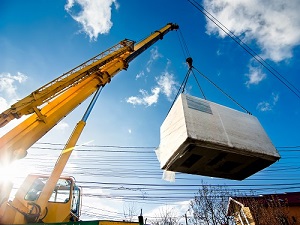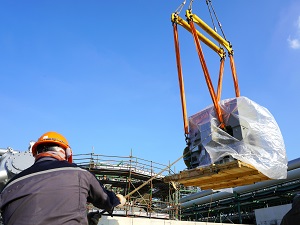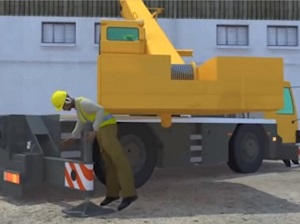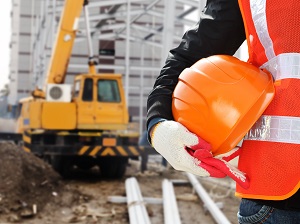Crane operators require specialized training. Workers rigging the load to be moved, and those guiding or working as a spotter must also be specially trained in their specific duties and tasks.

Falling loads, tip-overs, power lines, swing radius, rigging, guiding the load, hazard assessments, pedestrian safety... cranes are a force that should be taken seriously.
Construction workers should remember that working with and around heavy equipment puts them at risk for struck-by, caught-in, and other hazards. Cranes pose all these hazards and many more.
If cranes are a part of your operation, safety meetings on how to best work with and around cranes are a must. Ensure the following points are emphasized at any safety meeting with a focus on cranes.
Crane operators and all personnel working near or with the crane must be protected from possible overhead power lines. A hazard assessment must be performed and the amount of voltage of the overhead power lines must be determined before any activity with the crane. Barricades, safe work zones, and designated persons may have to be used to ensure the crane does not come too close to an overhead power line.

Crushing and caught-in hazards are serious! Cranes have many areas where caught-in hazards are possible.
OSHA Standard 1926.1424(a)(2)(i) says that the company must train each employee assigned to work… how to recognize struck-by and pinch/crush hazard areas posed by the rotating superstructure.
Workers must be aware of the "swing radius" of the crane and not position themselves where the crane can cause them to be struck by or pinched between any moving or rotating areas. Warning signs and barricades must be placed and workers should recognize these areas.

- Workers and the public must be protected from potential falling loads and potential tip-over of the crane.
- A safe route for the movement of the load should be set up before the operator lifts and moves the load.
- Only trained and authorized persons should be near the load.
OSHA Standard 1926.1425(b) While the operator is not moving a suspended load, no employee must be within the fall zone, except for employees: hooking, unhooking or guiding a load, attaching the load to a component or structure, or operating a concrete hopper or concrete bucket.

.jpg)

